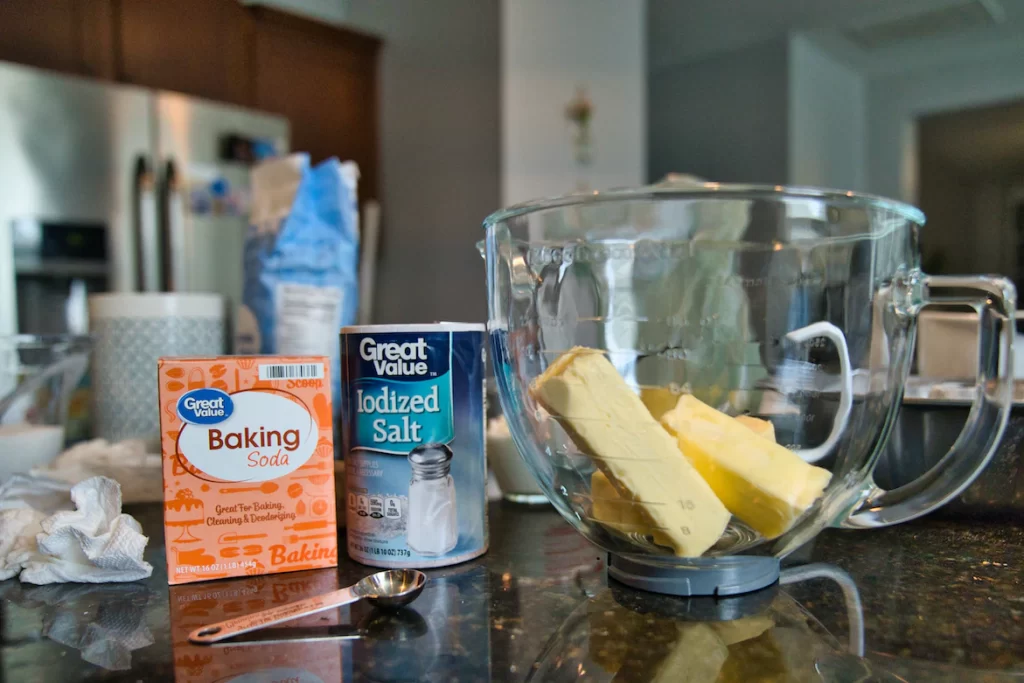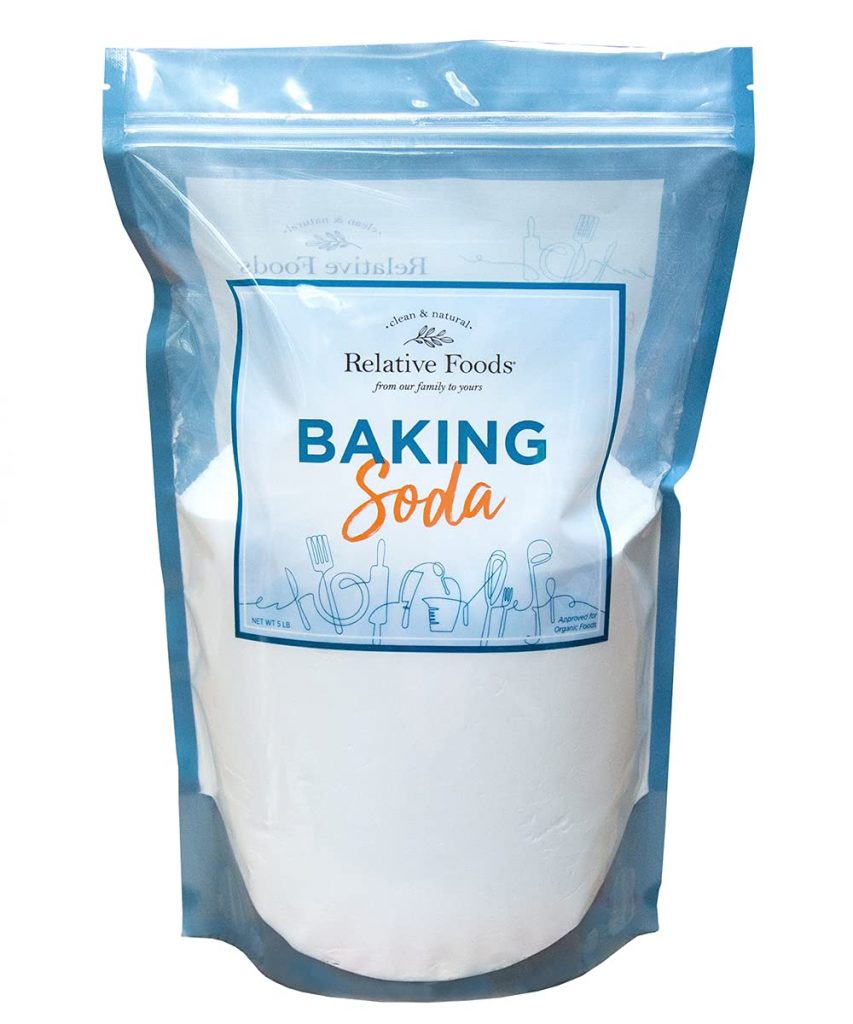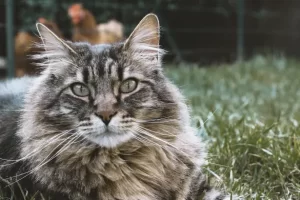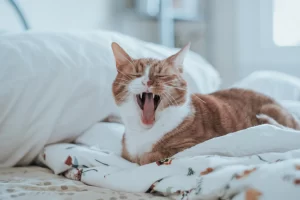Last updated on February 12th, 2023 at 02:11 am

When it comes to maintaining the cleanliness of our feline companions, we frequently resort to the same chemicals and cleaning products that we use elsewhere in the home. Baking soda is a fantastic item to keep around the house because of its many applications. Baking soda has a wide variety of applications, ranging from deodorizing to cleaning. It is also a component that may be found in many different types of cat litter. It is always a good idea, though, to make absolutely certain that any substance you intend to use in your house around your cats is risk-free. Cats are not little people, and as such, they are susceptible to the side effects of substances that are otherwise considered safe for human consumption. So, Is baking soda safe for cats?
Baking soda is generally safe to use in a home with cats, but do not directly use it on them. Baking soda would have to be consumed in large quantities for it to be harmful to your cat. In the worst-case situation, the high salt content of baking soda causes a life-threatening electrolyte imbalance. Baking soda is safe to use around the house, but you should take certain precautions in terms of your cats and dogs. We’ll go through how to use baking soda in a safe way around your cats in this article.

Relative Foods Baking Soda
What is Baking Soda?
Baking soda, also known as sodium bicarbonate, is a salt-based substance that normally comes in the form of a fine powder. Baking soda is, in fact, a base in terms of chemistry. It has an alkaline pH. (The opposite of acidic). If you bake, you probably have a baking soda and dry acid mixture in your kitchen. That mixture is generally referred to as baking powder. When the baking powder’s base and acid react with the liquids in the cake batter, a chemical reaction occurs, resulting in small bubbles that give your cake greater volume. Baking powder is far more dangerous to your cat, and you should always use the proper product.
Is Baking Soda Safe for Cats?
Although baking soda is not necessarily harmful, consuming more than a little amount can be hazardous. As a general guideline, your pet should not ingest more than 2-4 tablespoons of baking soda per 10 kilograms of body weight, and because baking soda has a salty, bitter flavor, your cat is unlikely to consume it at all. If a cat eats too much, an electrolyte imbalance can occur due to decreasing potassium and calcium levels and increased salt levels. Diarrhea, vomiting, shortness of breath, disorientation, convulsions and tremors, increased thirst, and indicators of dehydration are all symptoms of baking soda toxicity.
If you observe any of these symptoms after your cat has ingested baking soda, take them to the vet right once. In certain situations, vets will even administer baking soda to cats suffering from chronic kidney illness (CKD). Your cat’s bloodstream becomes more acidic as a result of CKD. Baking soda’s alkaline qualities aid to reduce acidity, balancing the pH of the bloodstream and alleviating certain symptoms.
Where and When to Use Baking Soda with Cats?
There are numerous uses for baking soda around the house, many of which include your cat. Here are a few examples.
Clean out the litter box
One of the best uses for baking soda is to remove odors, and no place has stronger scents than the litter box. A few teaspoons of baking soda mixed with the litter can help to improve the odor of the region. However, there are some cons to this idea. One of which is that it can make the litter box more dusty. Baking soda’s particle size is approximately 65-70 microns, making it tiny enough to be easily released into the air.
When breathed, it is also known to be a slight irritant, and baking soda irritates the eyes. Because most litter brands have a particle size greater than 75 microns, they are less likely to be dusty in the presence of baking soda. If you’re going to use baking soda, drop 1-2 teaspoons in the bottom of the litter rather than the top. The litter will weigh it down, reducing the possibility of it getting airborne if your cat pushes it up.
Some sources also contend that baking soda is inefficient as a litter box deodorizer. The pH values of baking soda are responsible for its ability to neutralize smells. A pH of 7 is considered neutral, yet baking soda has a pH of roughly 9, making it slightly alkaline. Because many scents are created by anything acidic (or with a pH less than 7), adding baking soda neutralizes those odor molecules. It also works for odors created by a pH that is very alkaline, or greater than a pH of 9, because it brings the pH equilibrium closer to normal.
The stench of cat urine in a litter box is caused by something other than the cat pee—at least not totally. As the urea in cat urine degrades, it emits ammonia gas. Baking soda will not return ammonia gas to a neutral pH level because it has a pH balance of 11-13. Part litters with pH levels lower than 9 may also rise when baking soda is added, reducing some of their effectiveness. Other choices, such as charcoal, may perform a better job of neutralizing litter box scents by absorbing the odors. However, if you are going to use baking soda, it may make more sense to choose a litter that already contains baking soda rather than adding it yourself.
Deodorize your bedding
Another place where a cat odor can develop is in their bedding or any other area of the house where they spend time. If you are unable to wash the bedding, sprinkle baking soda over the area and allow it to sit for 20 to 30 minutes before vacuuming. If you do put the bedding in the laundry, a cup of baking soda can help deodorize it, eliminating the need for chemical perfumes or hazardous essential oils.
Elimination of Fleas
Baking soda is a salt substance that may be used to treat fleas and performs an excellent job of killing larvae and eggs before they mature. The high salt concentration dehydrates the parasites and is extremely effective at reducing and eliminating fleas in your home and on your cat. Sprinkle baking soda wherever you see fleas and leave it to do its work. Vacuum the remaining powder, along with the eggs, larvae, and fleas it killed, after 24 hours. Repeat the technique every 3 to 4 days and do it three times to ensure that all fleas are eliminated.
Despite its effectiveness, this approach is better utilized on carpets or furniture rather than on your cat. It is a slow-acting approach that frequently requires more than one treatment to be effective. Furthermore, cats enjoy grooming themselves and are prone to consume it while doing so.
Cleaning Mishaps
If your cat has an accident on the carpet, you can clean it using baking soda mixed with equal quantities white vinegar to make a paste. Apply the paste to the contaminated area and let it set for a few minutes before wiping it down with a sponge.
Toothpaste for Pets
Baking soda can also be used to make pet toothpaste. Brush your pet’s teeth using a moist toothbrush dipped in baking soda. It performs admirably and is less expensive than commercial brands. You also don’t have to be concerned about the hazardous chemical sweetener xylitol, which is contained in several types of human toothpaste.
Cats, with the exception of lesser breeds, are smaller than dogs. The amount of baking soda required to clean their teeth is not hazardous, but it might induce stomach discomfort since baking soda’s alkaline qualities disrupt the pH equilibrium in the digestive tract. There’s no guarantee your cat won’t eat part of it. As a result, it’s essential to use cat-safe toothpaste.
What are the Signs That My Cat Has Consumed a Lot of Baking Soda?
If your cat consumes enough sodium to cause injury, the first indications will be digestive. Baking soda is used as a leavener in the kitchen because it produces bubbles that help baked items to rise; these bubbles can also form in your cat’s stomach. When too much baking soda is consumed, it produces stomach irritation as well as symptoms such as gas, vomiting, and diarrhea. Excessive thirst and drinking is another indication of salt overload.
When enough baking soda is taken to be poisonous, your cat may feel the dehydration, weakness or wobbliness, and lethargy. As the condition worsens, muscular spasms or twitching may occur, most commonly in the face. Other severe symptoms include fast breathing, stiffness, seizures, kidney damage, and even coma.
The issue isn’t whether or if cats can eat baking soda, but how much they consume. If your cat consumes a modest amount of baking soda, it will not harm them. Even though baking soda is not generally harmful, too much of it can create a variety of problems. Baking soda can be harmful to cats since they are constantly grooming themselves. They will consume any baking soda that their fur may pick up as they lick themselves. Cats clean their paws and may gnaw on their claws, so if they walk through it, they may ingest baking soda. Your cat is unlikely to intentionally consume baking soda, especially since it has an unpleasant taste. When it comes to our animal friends, we are always on the side of caution and keep an eye on Kitty while cleaning the house.
If you suspect or know your cat has eaten baking soda, try to discover how much was consumed and contact your veterinarian as soon as possible. If your cat has just received a small quantity, they should not be harmful, but gas or vomiting may happen; keep an eye on your pet and provide lots of fresh water. You don’t have to wait until your cat exhibits symptoms of poisoning to seek help. The sooner you deal with any possible issues, the better.
Conclusion
Despite the fact that baking soda is a multi-purpose product that can be used for cooking, cleaning, and other purposes, you should exercise caution when using it around your pet. Although baking soda is not toxic, consuming more than a teaspoon or two can be extremely hazardous to your feline companion. This is especially true for smaller cats, as the amount required for a toxic dose is lower. We hope you found this article useful in explaining the relationship between using baking soda in a safe way and your cat and that it has given you some new ideas for using this common household product.


